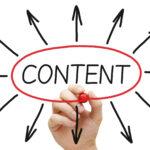Billions of optimized websites are available on the World Wide Web and millions are being built every day.
Now how your website will have any kind of effect and have that additional edge over the others? Experts always emphasized the website optimization speed as a very curial ranking factor so that it stands out from the others.
Website speed is now a major ranking factor in deciding your SERP and most of the search engines including Google have included website speed as a key factor in deciding your website ranking.
Why not pay attention to this easy-to-do website speed factor by following these simple rules.
There are a number of tricks and tips applied by big companies to speed up their website speed and they have a big team who is always busy improving website speed but do not be afraid we can increase our websites speed ourselves and this is the main purpose of this article.
So let’s dig deep.

First thing first
Make small favicon.ico
The favicon.ico is an obligatory image for your website and it stays at the root of your server. This image is obligatory because whenever a website is loaded, all browsers make a call to fetch favicon.ico and if this file is missing then it results in not found 404 error and you don’t want a needless 404 not found an error, as this is the waste of one HTTP request to the server.
One more thing you need to keep in mind is that the size of favicon.ico must be less than 1K. There are a large number of websites like Picnik, Image Optimizer for reducing the size of images, making use of them. read more about understanding SEO at https://cornflowerblue-turtle-582667.hostingersite.com/seo/understanding-seo
Reduce the size of images on your websites
I may have covered this point with the favicon.ico explanation but this is so important point that I have to cover it’s separately and it needs a detailed explanation. It is very important that you should optimize your images before using them on your websites because this will impact your overall website speed.
Use of optimized Images on your Websites
Pictures influence your websites to look great and appealing and many people have a tendency to transfer pictures straight from their cameras to their websites and they usually depend on plugins to optimize these images like on WordPress site, although these plugins optimize the images to some extent when you have free tools like Picnik, Imagemagick then why not use them?
Images being an important part of all websites, please pay attention to optimize all your images that are used on your websites and if possible do not take images directly from Google images they are mostly copyrighted and have embedded code in them and they are also copyrighted which can put you in big trouble.
Another important factor is that people try to scale images improperly without considering their aspect ratio, stretched images look bad and make the whole site look fake.
Make use of fewer HTTP requests
Now you will be thinking about what is this HTTP request?
An HTTP request is a handshaking protocol between a web server and a web request, whenever a page is requested from the server, all the parts of the page like images, stylesheets, scripts, flash, etc. are downloaded to your browser from the server.
More the number of modules on your requested page more the number of HTTP requests to the server to download these modules and hence slowing the website speed.
This is the reason that you should avoid too many images and plugins on your website. Each plugin loads its own CSS and stylesheet, scripts and then needlessly increases the number of HTTP requests and slows down the speed of your website.
Simple pages work best, try to keep your pages simple as much as possible so that your pages have fewer HTTP requests. Avoid unnecessary plugins on your site, this will speed up your site performance.

Minify CSS and Javascript
You cannot avoid CSS and Javascript because now these are an integral part of all modern websites, but one thing you can do is compressor minify them, compressing and minifying will remove unnecessary code and when code is minified, all the comments, white space, newlines, tabs are removed, and this will improve the site load time. As the code is minified javascript and CSS will take less time to load the requested page.
Use a CDN (Content Delivery Network)
A CDN is a network of geographically scattered servers that can store the static resources of your website like images, stylesheets, scripts, flash, etc. The scattered server will help to improve the load speed of your website pages. read more about CDN at https://www.cloudflare.com/learning/cdn/what-is-a-cdn/
This is helpful just when your website has global users and the traffic to your website is very high. On the other hand, if your website is restricted to a small geographical area do not play with CDN it will waste your time. Big names of the CDN providers are Akamai Technologies, EdgeCast, or level3.
Put Stylesheets in a separate file to optimize the website
Make sure that all the stylesheet calls are loaded in the header of your page. This will enable progressive loading of your website pages and without a style sheet, no contents will be displayed to the users, and various research conducted by different researchers have proved that putting a stylesheet in the <head> section and in a separate file has improved the website speed.
Put Scripts at the bottom to optimize the website
If you put the script in the <head> section or in the middle of the contents this will badly affect the performance of your site load time, make a rule to display contents first and put a script near the bottom of the page, this will improve your site load time.
Putting scripts in the <head> or in between the content would interfere with the loading of your website contents. So why not display the contents first and then load all the scripts at the bottom of the page.
Do Not use 404s ReDirects
404 errors are very bad for your website, as now we know that HTTP requests are expensive for your website, so why to leave 404 errors on your website there is a number of online tools and extensions available online which can report your website 404 error pages like Broken link checker chrome extension, Google hates broken links on your site and give your site low ranking in search terms, you need to avoid them as much as possible.
Avoid Redirects
There are many people who use the 301 and 302 redirect plugin, these plugins are used to redirect from a not found page to another page of the website or to a homepage of the site, but this usually slows down the user experience.
Injecting a redirect between the HTML and the user delays page load, since there is nothing in between them to serve to the user.
Life has become very fast and the researcher on the internet has no time to wait for your page to be loaded and if this is the case he/she will never return to your website and Google will rank your site very low and low site have no or very little traffic.
I am pretty sure that if you implement the above-explained tips and tricks you are going to drastically improve your optimized website performance.





